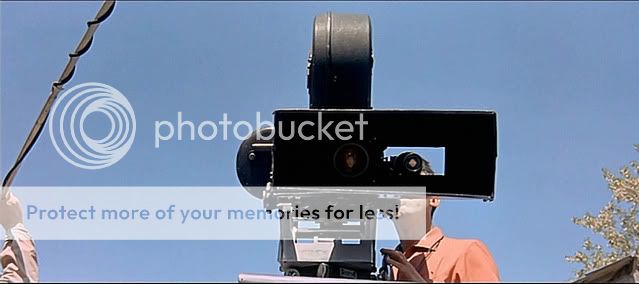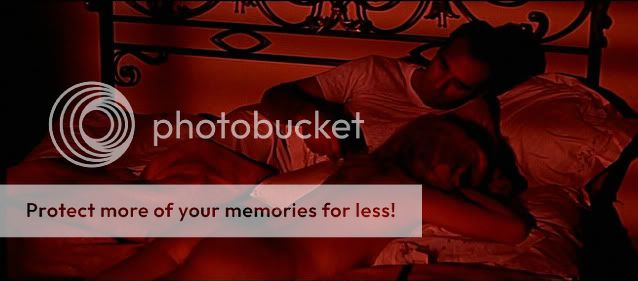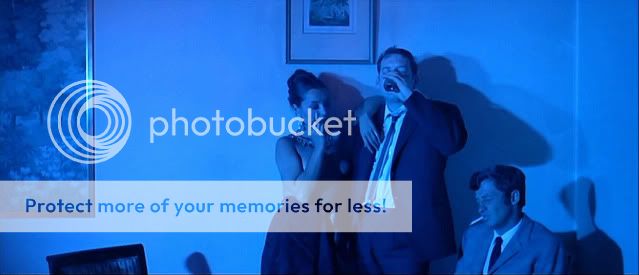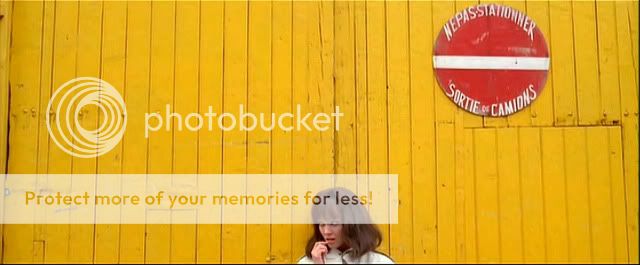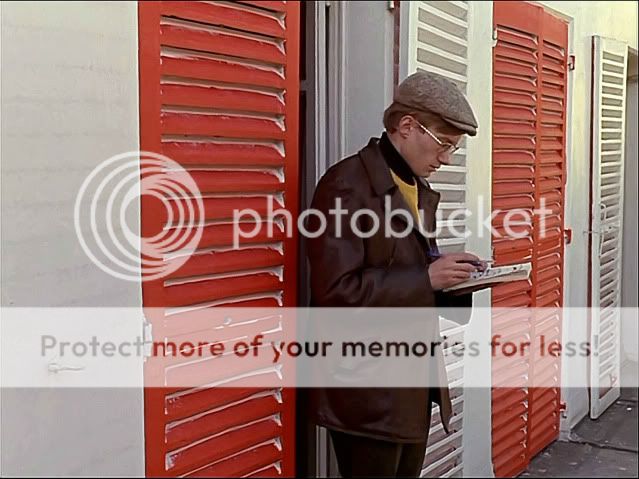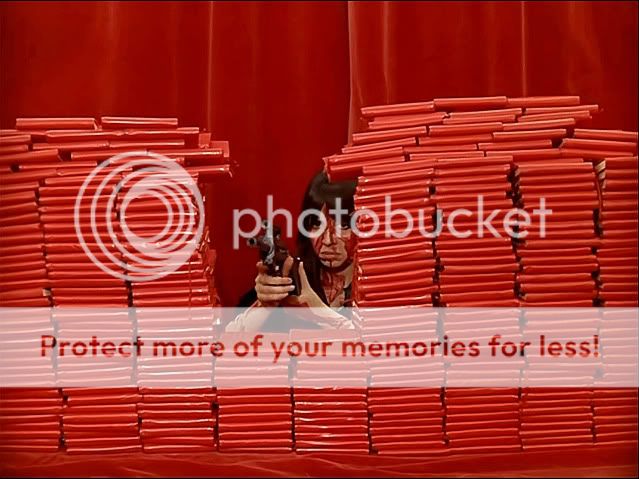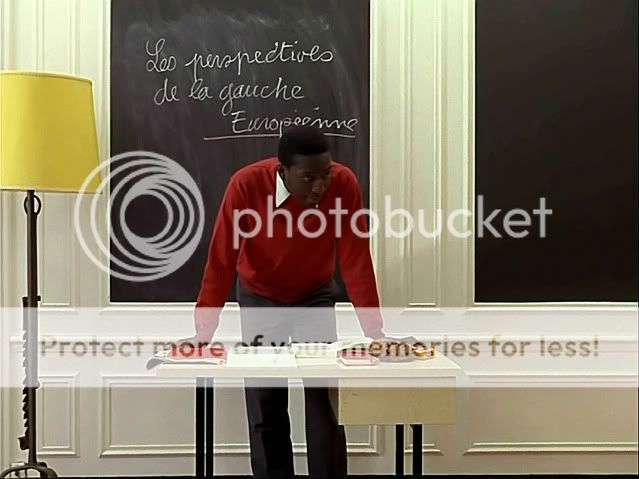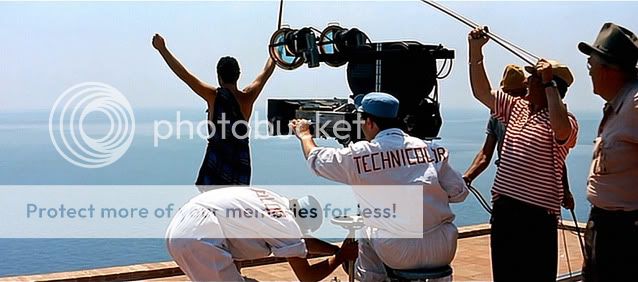The future is a busy place. The future is fast. The future is bright. The future is so busy and fast and bright that endless axis-spinning and whip-pans and lens-flares can't capture all the action. Which doesn't really matter, since there's nothing really interesting going on anyway. Basically, the future is a lame television show. A very slickly produced television show, viewed on the world's biggest HDTVs.
The future is also pretty. Not a beautiful, eminent vision of the future like Metropolis, it's pretty. It's filled with stick-figure super-model looking women who look like they've eaten a piece of bread over the course of the last month and androgynous pretty-boy pinups that represent our culture's definition of masculinity. Which is to say that Chris Pine's Captain Kirk and Zachary Quinto's Spock conform to our culture's vanity--- they have nice, inoffensive faces that you can plaster on Magazine covers and soda cups from fast-food chains. As with previous Abrams' products--- Alias, Lost, Cloverfield, I felt less like I was watching actors and more like I was watching models strut up a celluloid catwalk. And it all comes complete with the glossy slickness that has becomes Abrams' defining trait, unfortunately.
The future is also pretty. Not a beautiful, eminent vision of the future like Metropolis, it's pretty. It's filled with stick-figure super-model looking women who look like they've eaten a piece of bread over the course of the last month and androgynous pretty-boy pinups that represent our culture's definition of masculinity. Which is to say that Chris Pine's Captain Kirk and Zachary Quinto's Spock conform to our culture's vanity--- they have nice, inoffensive faces that you can plaster on Magazine covers and soda cups from fast-food chains. As with previous Abrams' products--- Alias, Lost, Cloverfield, I felt less like I was watching actors and more like I was watching models strut up a celluloid catwalk. And it all comes complete with the glossy slickness that has becomes Abrams' defining trait, unfortunately.
Which isn't to say that everyone isn't mostly enjoyable in their roles--- I found Pine grating at first, but then I found the film's entire first act (the prelude to the space trekkin') to be generally awful--- Star Trek meets The O.C.. Eventually, though, I settled into the movie's vibrations and accepted it for what it was and--- wait for it, actually had a little bit of fun, too. Quinto does seem to be channeling a young Leonard Nimoy without doing an outright imitation--- no easy task, and Pine rises above his material and proves himself to be an engaging screen presence with this feature. It's amusing seeing Eric Bana take a role so campy and ridiculous so agonizingly seriously, but the man is seriously dedicated to giving the most stone-faced high-camp performance in blockbuster history. Everyone else performs admirably, if not particularly memorably.
But the act of viewing J.J. Abrams' Star Trek is most unfortunate. There's an extremely enjoyable movie trapped somewhere in this mildly enjoyable one, and this leads to a frustrating viewing experience. And, while the script isn't exactly Chayefsky, it's really Abrams' directing that sucks the fun out of the movie. Star Trek has been written off as 'big-screen TV' by quite a few critics, and I don't really think that's fair, as that implies that all TV has a bland aesthetic . J.J. Abrams himself proved that notion wrong with the pilot of Lost, which managed to combine an aesthetic and rhythmic sense of action with a Producer's sense of economic storytelling (it's comparable to Spielberg's Duel, in that sense). Unfortunately, this mogul sensibility gets the better of Star Trek.
The opening sequence establishes that any sense of spacial relation would be simply non-existent. If you were to think of the camera as a dancer, then Abrams has two left feet. His camera is constantly obtrusive, continually denying the audience the satisfaction of knowing where objects within the frame are in relation to one another. The lack of camera choreography in action scenes continually deprives us clear-views of the action; the individual shots reveal little to no space within the frame, and the pictorial rhythm is such that it makes the act of trying to figure out where things are in the geographic sense a trying effort. His dialogue sequences are more satisfying, but still a rather limp-dick affair; Abrams uses nothing but the most basic of set-ups to flesh out his characters: wide shot, over the shoulder close-ups, shot/reverse shot. It's an aesthetic syntax that wears out its welcome pretty quickly--- ineffective at best and irritating at worst. You know you have a problem when you find yourself missing Christopher Nolan's bumbling, which is at least singular, distinct bumbling. Abrams just has a bland demographic pandering sensibility.
Which is especially disappointing as his first feature, the third Mission: Impossible movie, also pointed to a talent. Unlike Star Trek, which is all pitched at the same bombastic frequency, Abrams actually mixed up the technique with that feature; he used a myriad of tools at his disposal and this led to a much more satisfying viewing experience. In the pilot for Lost and M:I 3, each shot is an effective part of a visual tapestry, but it doesn't seem like there's any purpose with respect to the image succession in Star Trek. I never thought I'd see a large-scale blockbuster that seemed like it didn't use storyboards, like the shots are thrown together with no rhyme or reason; but, if ever there was one, Star Trek is it.
What we're left with is a slickly produced piece of market-sharing. Star Trek was made by a committee dedicated to making the inclusive Star Trek more main-stream and accessible, not a man with a vision. Ultimately, Abrams' take on the cosmos and their mystery is diminishing and uninspiring. Its 'humanist' thought is tacked on and disingenuous; a regurgitation of blather from the series instead of a fresh, invigorating take on pop-culture folk-lore. Compare this with other film makers who simultaneously over-powered you with spectacle, but used this spectacle to heighten your senses and expand your understanding of the world around you: Lang, Kubrick, Spielberg, De Palma, Scott--- and suddenly Arbams' teeny bopping vision of the spoiled, entitled, petulant young Enterprise crew seems particularly tacky and pointless. Whereas other film makers have heightened cosmic contact to religious experiences, Abrams still casts the 'other' in a generic monster role. How far we haven't come.


